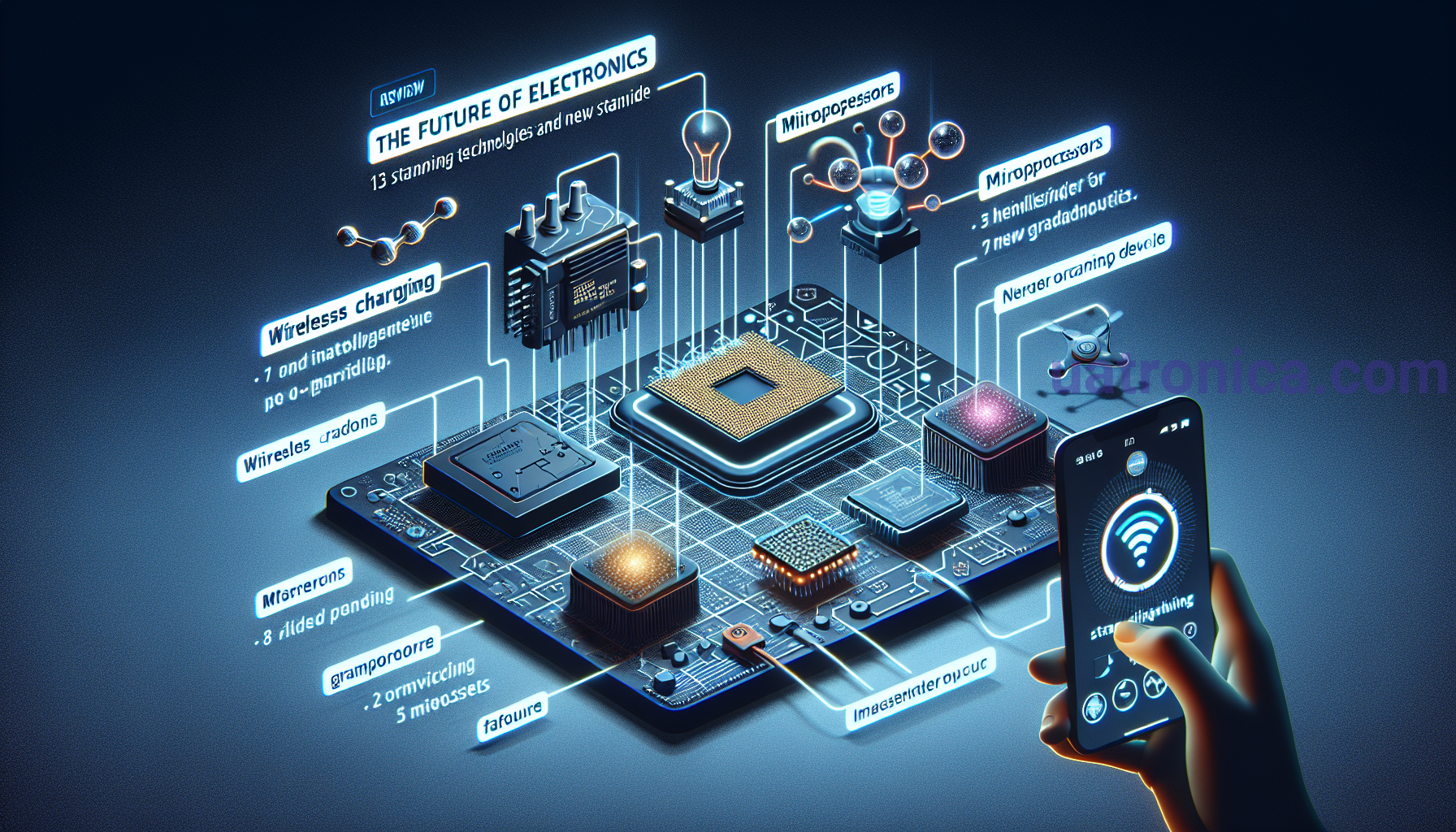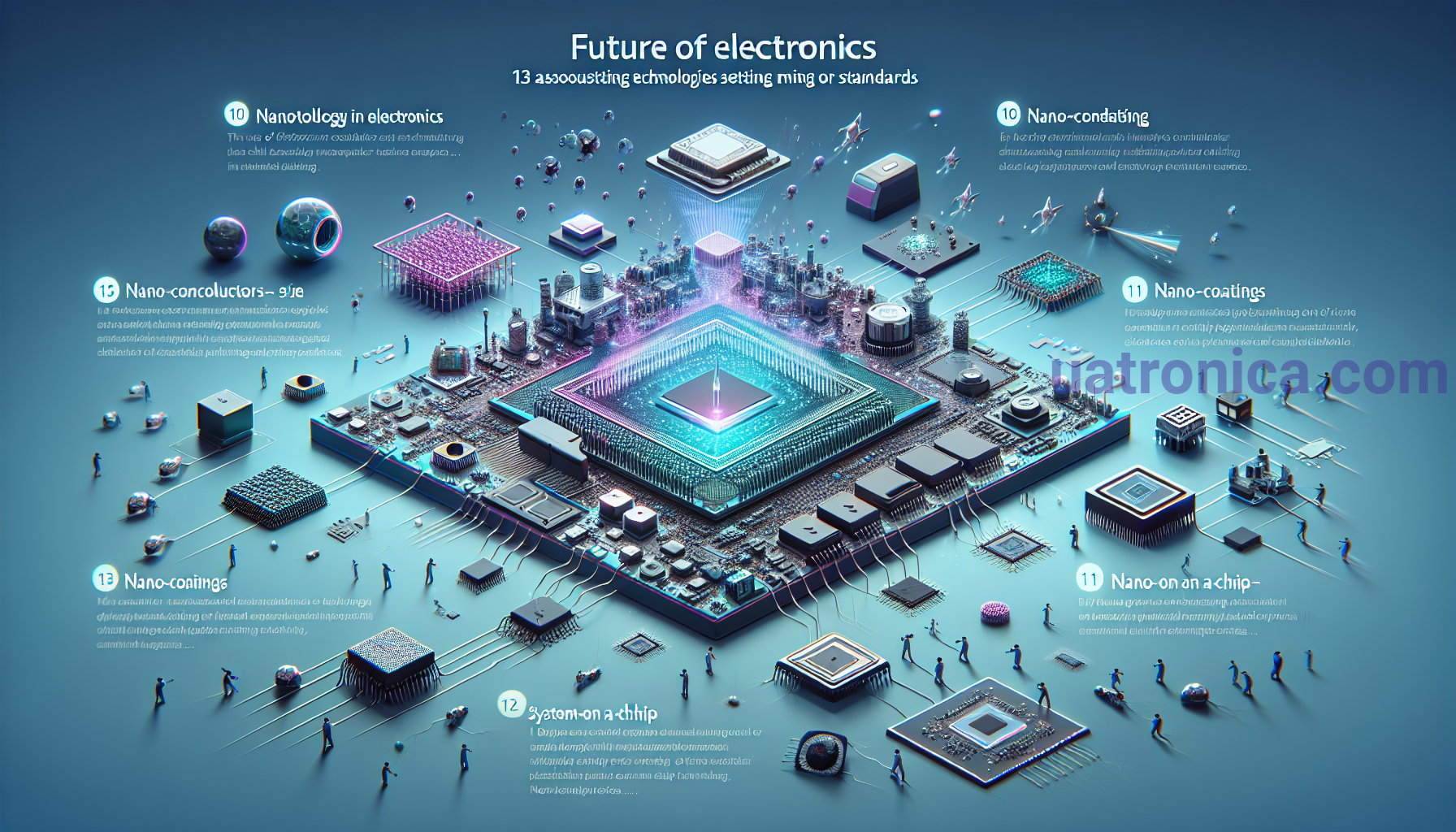13 Amazing Technologies That Will Shape the Future of Electronics: An Expert's Opinion
In today's world, technologies are developing at a phenomenal speed, affecting various aspects of our lives. In this article, we take a look at 13 amazing technologies that have the potential to change the face of electronics in the coming years. Each of these technologies promises to improve our gadgets, streamline processes, and ultimately improve our daily lives.1. Internet of Things (IoT)
The Internet of Things (IoT) technology allows you to connect everyday objects to the Internet. This provides an opportunity to control and interact with devices such as household appliances, cars, smart watches, from anywhere.# Notes:
– Advantages: efficiency improvement, ease of use, household automation. – Examples: smart thermostats that adapt the temperature in the house depending on your schedule.2. Artificial Intelligence (AI)
Artificial intelligence is becoming an increasingly powerful tool in various fields, including electronics. With the introduction of machine learning algorithms, devices become capable of self-learning.# The impact of AI on electronics:
– Automation: optimization of robotics and production processes. – Personalization: adaptation of products to user needs.3. Quantum Data Processing
Quantum computers promise to revolutionize data processing, offering speeds and computing capabilities beyond the reach of classical computers.# Comparison of traditional and quantum computers:
| Parameter | Traditional computers | Quantum computers | |———————–|————————|———————–| | Data processing | Linear | Parallel | | Speed | Gigahertz | Terahertz and more | | Application | General tasks | Complex calculations |4. Electronics on Flexible Materials
Flexible electronics opens up new horizons in device design. Researchers are working on creating screens that can be bent and twisted while maintaining full functionality.# Advantages of flexible electronics:
– Convenience: ease of use and transportation. – New opportunities: creation of wearable technologies and interactive objects.5. Wireless Chargers

# Advantages:
– Ease of use. – Reduction of wear of connecting connectors.6. Microprocessors Based on New Materials
Technologies for creating microprocessors are gradually moving to new materials, such as graphene and perovskite, which provide higher performance and energy efficiency.# What does it matter?
– Speed: increasing clock frequencies. – Energy efficiency: reduction of electricity consumption.7. Virtual and Augmented Reality
Virtual (VR) and augmented reality (AR) are changing the way we perceive information. They are already actively used in education, medicine and entertainment.# Application examples:
– Education: interactive lessons using VR. – Medicine: virtual training for surgeons.8. 5G technologies
5G technology promises to increase data transfer speeds and reduce delays to milliseconds. This opens up new opportunities for IoT and autonomous cars.# Effect on electronics:
– Connection: Connected devices will be able to exchange data faster. – Expansion: new innovative solutions in many areas.9. Blockchain in Society
Although blockchain is commonly associated with cryptocurrencies, its technology can be used to provide transparency in supply chains and protect data.# Application:
– Financial services: secure transactions and reduce fraud. – Supply chains: tracking products in real time.
10. Nanotechnology in Electronics
The use of nanomaterials in the production of electronic components can lead to significant reductions in size and weight while maintaining or increasing performance.# Examples:
– Nanoconductors that increase the speed of transmission of electrical signals. – Nanocoatings that improve wear resistance.11. Systems on a Chip (SoC)
Systems on a chip combine various components of the device into one, which allows you to reduce energy consumption while simultaneously increasing productivity.# Differences between SoC and traditional components:
– Compactness: reduced dimensions. – Energy efficiency: reduction of energy consumption due to integration.12. Mixed and Interactive Design
Blended design technologies allow for the integration of physical and digital elements, which opens up new possibilities in product design and user interaction.# Potential areas:
– Automotive industry: development of new interfaces for drivers. – Consumer electronics: creating more intuitive interfaces for users.13. Microbial Fuel Elements
These cells, using microbes capable of converting organic matter into electrical energy, are becoming important for ecological electronics.# Advantages:
– Renewable energy source. – Reduction of carbon dioxide emissions.Conclusion: Prospects
The future of electronics is incredibly exciting. Thanks to these 13 amazing technologies, we can expect innovations and changes in our everyday life that will make our lives more convenient and productive. Interest in new technologies continues to grow, fueling the development of new products that can improve our world. Additional information about the technologies of the future is already available for viewing on our website.










